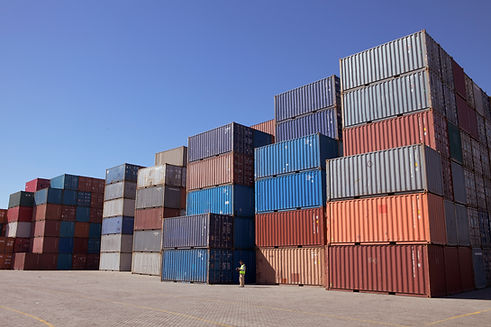Distribution of HFO
Providing Everything You Need

Packaging & Safe Handling
Key Components:
-
ISO Tanks:
-
These are standardized, intermodal containers (ISO 6346-certified) designed for bulk transport.
-
Made of stainless steel or carbon steel, they’re pressure-rated and thermally insulated to prevent leaks or reactions during transit.
-
Ideal for long-distance shipping (e.g., overseas) because they can seamlessly transition between ships, trains, and trucks without repackaging.
-
-
Cylinders & Drums:
-
Smaller quantities (e.g., for HVAC repairs) are stored in carbon steel cylinders with pressure relief valves.
-
Drums are used for non-pressurized HFOs or blends.
-
-
Safety Features:
-
Tamper-proof seals and corrosion-resistant materials.
-
Labels with hazard warnings (e.g., “flammable” for HFO-1234yf), GWP values, and handling instructions.
-
Transportation & Logistics
Key Steps:
-
Mode Selection:
-
Road: Trucks with reinforced chassis for ISO tanks or cylinder racks.
-
Rail: Used for cross-continental bulk transport (e.g., Europe to Asia).
-
Sea: ISO tanks are stacked in shipping containers on cargo vessels.
-
-
Regulatory Compliance:
-
Follows ADR (Europe), DOT (U.S.), or IMDG (maritime) regulations for hazardous goods.
-
Drivers and crew require specialized training for HFO handling.
-
-
Real-Time Monitoring:
-
IoT sensors track temperature, pressure, and GPS location.
-
Alerts trigger if conditions deviate (e.g., a tank overheating in transit).
-
Challenges:
-
Avoiding contamination (even trace moisture can degrade HFOs).
-
Managing flammability risks (e.g., HFO-1234yf requires ventilated transport).


Recycling & End-Use Delivery
1. Recycling
-
Container reuse: Empty ISO tanks and cylinders are returned, cleaned, and re-certified for reuse. Residual HFOs are purged to prevent waste.
-
HFO reclamation: Used refrigerants are filtered (removing contaminants) and distilled to recover pure HFOs for non-critical applications like foam blowing.
-
Why: Reduces production demand, prevents leaks, and aligns with circular economy goals.
2. End-Use Delivery
-
Industry-specific delivery:
-
Automotive: Bulk HFOs in ISO tanks for automated AC systems.
-
HVAC: Small cylinders for contractors servicing buildings.
-
Foam production: Direct pipeline transfer to factories.
-
-
Safety: Sealed connections, leak sensors, and mandatory technician training (e.g., EPA certifications).
-
Partnerships: Leasing models for ISO tanks and take-back programs to reclaim used HFOs.